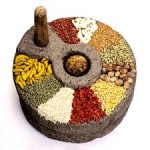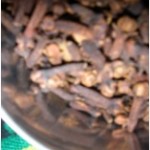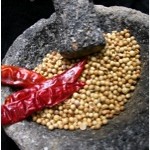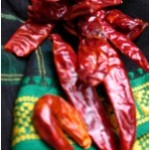Ms. Min Kaur grew up in a household centred on food and community building. Today, she regularly invites her sisterhood of friends, academics, and activists to her home for a meal to share stories and space as a PhD student in Sociology & Equity Studies in Education at the Ontario Institute for Studies in Education of the University of Toronto. Min is also a professor in the School of Community and Social Services at George Brown College. Equally a community leader and changemaker, Min shares some food for thought about peacebuilding.
“My memories of the spices are so vivid. My mother and a group of her ‘sisters’, friends really, are people we met when we moved into the public housing building. These were the only other three Sikh families in our neighbourhood of over five thousand people. These women immediately became ‘sisters’ because of a common cultural bond (despite the fact that my mother was the only one born in India, the others were 2nd or 3rd generation born in Malaysia). Every few months they would gather together in our flat after having traveled around the island to purchase the best spices. Then they would clear all the furniture in our small living room, spread a blanket out and proceed to sit for the next few hours cleaning the spices. Cups of chai would flow, recipes would be traded, significance of individual spices would be shared (often related to what had been learnt from an elder), songs sung and sometimes lyrics composed on the spot! Once the spices were dried in the sun for a few days, they would all gather again and make a visit to the General Mill to have it ground.
What happened during these gatherings was an exchange of knowledge for the women who were of the Diaspora. They were able to, through my mother, learn more about a ‘homeland’ they had no connection to. It was through her they learnt about my grandmother’s Garam Masala recipe, which required the black cardamom. And through them, my mother learnt to infuse the South Indian influence of adding karuvapillai and the Chinese spice star anise. Confined by the concrete buildings of the public housing complexes and amidst the urban development projects that the country was engaged in, these women were able to replicate a sense of community from their previous homes (kampongs / villages in Singapore and Malaysia, and in my mother’s case living in three different housing situations in Singapore after moving from Rajasthan). The entire process of making the Garam Masala became a process for these women to claim ‘space’, honour what knowledges they had inherited, have some agency over themselves and their children, and most importantly they were able to honour and build new traditions that have been passed down. While none of my sisters have taken up this tradition of preparing masala, opting instead to purchase the more convenient store-bought variety, I choose to continue preparing it from scratch in my own way.
By using photography, I am sharing my mother and aunties’ recipes of their Garam Masala. While I have not chosen to share the amounts of ingredients needed (this is dependent on how much masala one is making), I have listed the ingredients in the three languages that are a part of my life – English (my 1st language, Punjabi (my Mother tongue) and Malay (my 2nd Language).
* Laung (Punjabi) * Clove * Bunga Cingkeh (Malay)
A natural anesthetic. It’s anesthetic action helps numb the digestive system and reduces gastric irritability. My grandmother would ask my mother to place a whole clove on an aching tooth to help with toothaches. Clove water helps to with indigestion and cloves are used extensively in creating masalas (dried mixed spices) and rempahs (spice pastes).
* Dhania (Punjabi) * Coriander * Ketumbar (Malay)
Healing Properties:
Coriander seeds help to strengthen the stomach and promote digestion. They help in the removal of phlegm and when ingested help to reduce blood pressure. Used whole or ground, dried coriander is used in a variety of dishes and its leaves are used to make chutneys and pastes for marinades. Its roots are used to flavor soups.
* Kali Elaichi (Punjabi) * Black Cardamom * Buah Pelaga (Malay)
Black cardamom pods are unique in that they are very medicinal in flavour, differing from the commonly known green cardamom pods. Its seeds are prided for their medicinal powers to help with stomach disorders and heartburn. Cardamom can be boiled in milk and used to add flavour to teas and desserts. My mother passed down to me my grandmother’s Garam Masala and Chai Masala recipes, which include both the green and black cardamom. I have never seen the black cardamom used in any Western foods. My mother would often give us the green cardamom to chew after a meal as a natural breath cleanser!
* Lall Mirch (Punjabi) * Red Chillies * Chili Merah (Malay)
My mother taught me that chillies require the fine art of balance and an avoidance of overindulgence. In access they can cause the lining of one’s stomach to burn. Rich in vitamins, they help with inflammation of the joints. It is also used in a ceremony to expunge cast/evil eye.”
Min, thank-you for opening up your heart and home, and sharing healthy food, kindness, and laughter. Your commitment toward cultivating a culture of peace through food impacts transformative change on a personal, societal, and global scale.






Recent Comments